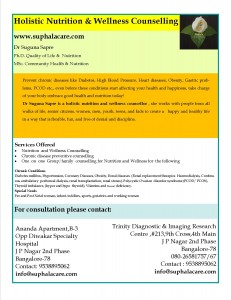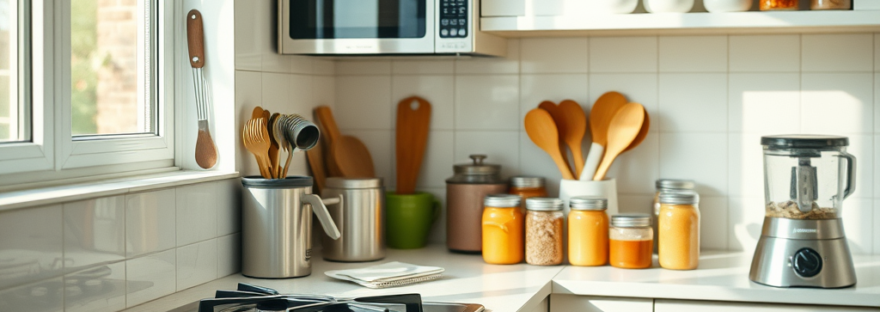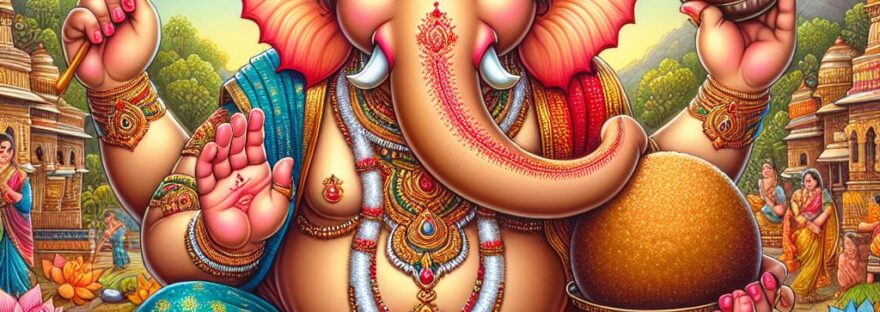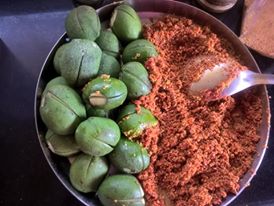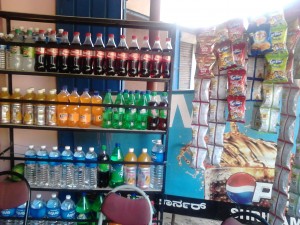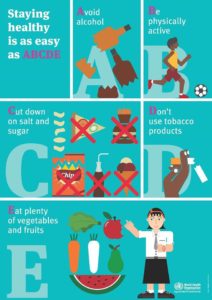Category: Wellness
Baby’s Best Start: Nutrition and Wellness Advice from the Experts
The human body is one of nature’s finest creations, and no artificial intervention or replacement can supplant its original form. Similarly, breast milk is one of the purest, healthiest, safest, and most economical foods for newborn babies. It directly impacts the mental, physical, and emotional well-being of new mothers. Breast milk is a priceless gift that you can offer your baby, unmatched by even the finest artificial formulations due to the absence of growth factors and immunoglobulins present in breast milk. Feel glad if you can breastfeed your baby; there is so much science and art behind breastfeeding that you will cherish during your motherhood.
The significance of breast milk and its health benefits to both the baby and the mother have been detailed extensively in medical books, human physiology, nutrition, and more recently through social media. The success of breastfeeding is purely dependent on the health status of the mother, closely associated with her dietary habits, socio-economic status, geopolitical environment, and pre-existing medical conditions. Hence, it’s important that women take care of their health and nutritional status even before they shoulder the responsibilities of family and motherhood.
During pregnancy, a woman is looked after with a lot of care and love, often expressed through feeding her according to her cravings, likes, and dislikes. However, it is crucial to maintain a balance and avoid extreme food behaviors like overindulgence or starvation, which can affect the growth of the fetus. Understanding the importance of balanced nutrition during pregnancy, eating at regular intervals, along with light exercise and prenatal yoga, provides extended benefits post-pregnancy.
In recent times, I have observed that mothers, grandmothers, and extended families are increasingly concerned about the nutrition and health of mothers and newborns within hours of delivery. While this is a positive sign of caution and care, going overboard can create psychological distress. It’s also important to recognize that some women suffer from postpartum depression, which can impact breastfeeding.
Steps to Ensure Quality Breastfeeding:
- Preparation: Many maternity hospitals offer sessions to prepare women for nursing during the last month of pregnancy. These sessions provide valuable information on holding the baby, breastfeeding methods, dos and don’ts, and breast hygiene, easing the initial challenges of nursing.
- Consultation: Talk to nursing or lactation specialists for personalized advice.
- Initiation: Start breastfeeding soon after birth. Encourage skin-to-skin contact and offer your breast as often as your baby wants to feed in the early days. This helps stimulate milk production. The first milk, colostrum, provides significant immunity, so start feeding without hesitation.
Health and Nutritional Significance of Breast Milk:
- Colostrum: The first milk your baby receives, rich in white blood cells and antibodies, especially immunoglobulin A (IgA), which coats the baby’s intestines to prevent infections and allergies.
- Mature Milk: Contains essential nutrients like proteins, carbohydrates, fats, vitamins, and minerals that are easily absorbed by the infant, unlike formula feeds.
Benefits for the Baby:
- Strong immunity
- Prevention of acute infections and chronic disorders
- Mental sharpness and timely milestones
- Economical and safe
Duration of Breastfeeding:
- Minimum of 6 months, ideally up to 12-13 months.
- Gradually wean from the 9th month, introducing whole milk and solid foods by 15 months.
Alternative Feeding Methods:
- Seek expert help if breastfeeding is challenging.
- Avoid feeding foreign foods like honey, sugar water, or cow milk.
- Consider wet nurses or breast milk banks if necessary.
Benefits for the Mother:
- Helps uterus contraction and reduces postpartum bleeding.
- Lowers the risk of breast and ovarian cancers.
- Builds a strong emotional bond with the baby.
- Aids in losing postpartum weight and toning the body.
- Acts as a natural contraceptive to some extent.
Dos and Don’ts During Lactation:
- Follow researched and traditional guidelines to ensure a healthy breastfeeding experience.
Let your bosom nurture your little one to blossom into a happy and healthy child!
Transform Your Kitchen: Expert Tips from a Top Nutritionist and Dietitian
This information may not come from a nutrition or health expert, but I’ve ensured to cover this issue for multiple reasons that affect our time, enthusiasm, effectiveness, and variety in cooking. Cooking food in a clean place with a happy mind can be meditative—try it yourself! 😊
- Maintain Your Equipment: Ensure all your equipment like the gas stove, microwave, oven, toaster, sandwich maker, water filter, mixer, grinder, food processors, chopping boards, and knives are in good condition and serviced timely as required.
- Grocery Assessment: Conduct a fortnightly assessment for groceries and list down the foods required for the next 15 days.
- Weekend Prep: Dedicate 1 hour on a weekend to prepare your masalas, curry powders, sprouts, and batter for idly dosa, or ready-to-use paratha stuffing/phulka/roti dough (dough can be refrigerated for up to 2 days).
- Container Cleanup: Clean up empty containers and refill foods needed for the next 15 days. Ensure foods stored in large amounts are protected with good insect/pest control measures.
- Natural Pest Control: Use red chillies in dal and dry neem and tulsi leaves in rice to keep grains clean and insect-free, along with other organic products available in the market.
- Spice Box Organization: Clean up your spice box, add the required spices, and keep it handy.
- Fridge Maintenance: Clean out the fridge, remove leftovers, and ensure proper defrosting and cooling temperatures are maintained. Keep different foods in separate sections (dairy products, meat and poultry, cooked foods, ready-to-make foods, vegetables and fruits, and foods that require freezing).
- Menu Planning: Plan a week’s family menu. It’s easier to cook when planned and everything is in place.
- Regular Cleaning: Clean kitchen towels, napkins, and covers every 15 days. Sanitize the kitchen sinks and dustbins regularly.
- Pest Control: Pest control in the kitchen is essential, especially to get rid of cockroaches, fruit flies, and mosquitoes.
- Surface Scrubbing: Scrub the cooking platforms and tiles at least once every 15 days. A clean and bright kitchen will make you happy and encourage you to cook. When you cook with happiness and love, the food will surely taste better!
Discover Why Ganesha Loves Jaggery Laddu: Tips from a Dietitian
As part of the series I mentioned during Ganesh Chaturthi, where I share 10 offerings (Prasadam) made to Lord Ganesha and their nutritional benefits, today I present Bappa’s (Lord Ganesha’s) favorite laddu – Jaggery with Groundnuts (Peanuts/Phalli Dana).
This recipe is very simple and quick to make, and it’s also very healthy, especially for kids, young girls, and nursing mothers!
Ingredients:
- 1/2 cup grated jaggery
- 1 cup roasted groundnuts, coarsely ground (Note: Do not make a fine powder)
- Cardamom powder
Instructions:
- Mix the grated jaggery and groundnuts.
- Add cardamom powder and mix well.
- Form the mixture into round laddus. (Note: If the jaggery is too dry and the mixture doesn’t bind, microwave it for 15-20 seconds to soften and moisten it, making it easier to form into laddus.)
Nutritional Benefits:
Jaggery is an unrefined form of sugar made from sugar cane, rich in iron, mineral salts, calcium, magnesium, and zinc. It generates warmth in the body and is absorbed gradually, preventing sudden spikes in blood sugar levels. Jaggery also aids in digestion, prevents constipation, and helps with lung and upper respiratory blockages. It acts as a nerve tonic, helps in fluid balance, and purifies the blood. Regular intake can prevent muscular cramps, especially in women.
Groundnuts are rich in proteins, essential fatty acids, fiber, B-complex vitamins (especially niacin and riboflavin), and phosphorus. Cardamom adds flavor and a dash of antioxidants.
This laddu is a complete food, especially for those looking to increase complex carbs, reduce direct fats, and improve fiber intake. It’s a wholesome and delicious offering (Naivedhyam/Prasad), especially loved by kids!
Word of Caution:
- Use plain peanuts without additives like salt, sugar, or coatings.
- Roast the peanuts fresh for this recipe; do not use pre-powdered and stored groundnut powder as it can turn rancid.
- Avoid this recipe if you are allergic to peanuts/jaggery or suffer from frequent headaches/migraines.
- Remember, anything in excess can be harmful!
Sukha Karta Dukha Harta! Ganapathi Bappa Moriyaa!
Expert Dietitian’s Guide to Bengal Gram & Coconut Salad for Gowri Ganapathi
I was completely absorbed in the preparations for Gowri (Maha Lakshmi/Jeshta Gowri) Pooja celebrations, which fall on the 4th, 5th, and 6th days of Ganesh Utsav, celebrated on the 21st, 22nd, and 23rd of September 2012 this year. I was also involved in making several traditional Prasadam/Naivedhyam over these three days and, of course, indulging in all the delicious food prepared. However, as I always say and practice, anything in excess is dangerous. Enjoy moderate amounts without overloading your tummy, and savor what you eat, keeping all senses in sync!
Today, I would like to share a savory dish prepared during this pooja: Vatlya Dalichi Koshimbir (Bengal Gram Dal Coconut Salad). It’s one of the simplest yet most wholesome recipes, loved by both mother and son (Ganesha and Gowri/Parvathi)! It’s also prepared on the last day of Ganesh Utsav, but you can enjoy it anytime as a nutritious snack!
Ingredients:
- Soaked Bengal Gram – 150 gm (soaked for 6-7 hours in water prior to making)
- Fresh Coconut – 100 gm, grated
- Freshly chopped coriander – 1/2 bunch
- Ginger – coarsely pounded, 1 tsp
- Cumin seeds – 1 tsp
- Mustard seeds – 1 tsp
- Curry leaves – approximately 20 leaves
- Green chillies – 2-3, as per taste
- Asafoetida – 1 tsp
- Oil – 1 tbsp
- Salt – as per taste (lesser the better!)
- Lime juice – from 1/2 lime
Instructions:
- Heat oil in a heavy-bottomed pan and add cumin, mustard seeds, and asafoetida to crackle.
- Add chopped ginger, curry leaves, and green chillies. Mix well and leave on low flame for 2-3 minutes.
- Meanwhile, drain the water from the soaked Bengal gram, rinse it well, and add it to the seasoning mix. Cook on a low flame.
- Add the grated coconut, chopped coriander, and salt as per taste. Mix well and leave on low flame for 2-3 minutes.
- Add lime juice and serve warm.
Nutritional Benefits:
- Bengal Gram: Rich in protein, carbs, fiber, minerals, and B vitamins.
- Coconut: Provides protein, calories, medium-chain triglycerides (MCT), vitamins A and E, and fiber.
- Coriander, Curry Leaves, and Green Chillies: Packed with minerals, vitamins A and C, and antioxidants.
- Cumin and Mustard Seeds: Contain essential oils and antioxidants, adding warmth and flavor.
- Asafoetida: Carminative, soothes intestines, prevents gas, and enhances flavor.
- Oil: Adds fats and calories.
This salad is a complete, wholesome food. Treat yourself to this energy and protein-packed snack and feel the difference. Just remember to pre-plan by soaking the gram and grating the fresh coconut in advance.
Please remember, anything in excess is dangerous!
Ganapathi Bappa Moriyaa! Mangal Moorthi Moriyaa!
Expert Dietitian’s Guide to Ganesha’s Beloved Kheer/Payas/Payasam
Any festival is incomplete without the regional form of Kheer/Payas/Payasam offered to Lord Ganesha. As we enter the third day of Ganesh Utsav on 21st September 2012, here’s a little detail on Kheer. There are at least 50 variants of Kheer prepared across India that I am aware of, and there may be more! 😊 However, I have ensured that my version is not too elaborate, requiring too many ingredients or long hours of cooking. Typically, Kheer is a sweet made using milk (boiled to half its quantity on a low flame) mixed with sugar/jaggery, along with vermicelli/sevainya made from wheat or rice flour. It can also be made from broken wheat/semolina or cracked rice (Govindobhog rice is the best option for rice kheer) and sometimes a mix of rice and dals/pulses (green gram/bengal gram).
Note: When milk recipes are cooked on a low flame for a longer time, the taste is certainly richer compared to short-time, high-flame cooking!
My Version of Kheer:
Ingredients:
- Milk – 4 cups (boil on low flame for 30 minutes; leave a small porcelain dish in the pot to prevent spilling or burning)
- Jaggery – 1/2 cup (grated)
- Milk Maid – 100 ml
- Broken wheat (Bansi Rava) – 1/2 cup (soak for 30 minutes before cooking)
- Clarified butter (Ghee) – 20 gm
- Dry fruits (cashews, raisins, and almonds)
- Cardamom and saffron for flavor and color
Method:
- Pressure cook the soaked broken wheat with its soaking water for 4-5 whistles.
- Heat a frying pan, add ghee, and fry the dry fruits until golden.
- Add the cooked broken wheat to the pan and mix on a low flame for a few minutes.
- Add grated jaggery and Milk Maid diluted with 100 ml of water. Cook for 2-3 minutes until the jaggery melts, stirring continuously.
- Slowly add the reduced milk, keep stirring, and allow it to boil for 5-10 minutes on a low flame.
- Serve lukewarm.
Nutritional Benefits:
- Milk: Rich source of protein, calcium, and vitamin A.
- Jaggery: Rich in iron, minerals, and fiber.
- Milk Maid: Provides calories, protein, and fat.
- Broken Wheat: Rich in protein, carbs, vitamin B complex, and fiber.
- Clarified Butter: A better fat option compared to saturated fatty acids and butter.
- Dry Fruits: Provide vitamins, minerals, antioxidants, and fiber.
- Cardamom and Saffron: Add flavor, natural color, antioxidants, and essential oils.
A complete food indeed! 😊 So go ahead and experiment with ingredients to make your version of a complete food Kheer.
Note: You can avoid Milk Maid if you have good quality milk, but you might need to boil the milk longer to make it creamy/thicker.
Caution: Anything in excess is dangerous!
Ganapathi Bappa Moryaa! Mangala Moorthi Moryaa!
Day 6 is dedicated to Maa Katyayani and she blesses each of us with strong immunity and wellbeing.
Today we continue on the 6th day of detox with honey and Guavas. The Day six of Navratri is dedicate to Maa Katyayani – the daughter of Sage Katyayani. She is offered liquid gold (honey) and Guavas as she is the symbol of health and wellbeing.
Honey is one of the most ancient natural sweetener known to man with a chest of health benefits and a quick energy drink. It provides calming effect on the mind and body and helps in repair and regeneration of cells and builds immunity against seasonal changes, allergies and wounds and associated health issues. It aids in good sleep and boosts memory and an excellent remedy for seasonal cough and cold.
Why Offerings made to God are so nutritious !
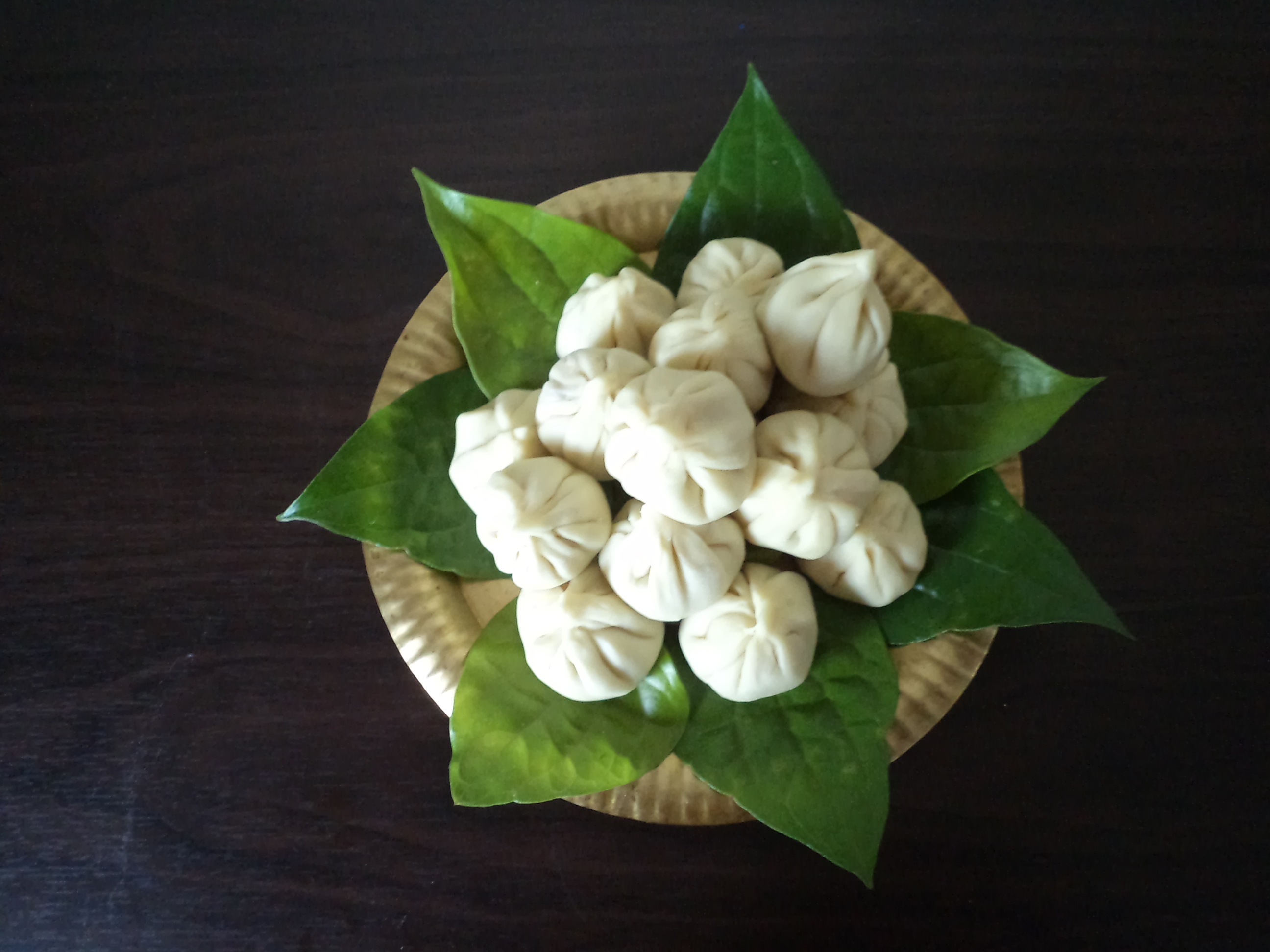 With the upcoming festivities Ganesh Utsav celebrated across several parts of India, ( The 10 day celebrations of Lord Ganesh, the Elephant Buddha!) most of us would be busy preparing for the event and most importantly preparing foods favourite to Lord Ganesh !
With the upcoming festivities Ganesh Utsav celebrated across several parts of India, ( The 10 day celebrations of Lord Ganesh, the Elephant Buddha!) most of us would be busy preparing for the event and most importantly preparing foods favourite to Lord Ganesh !
Interestingly I realised that all the various foods offered to lord Ganesh are complete and wholesome foods. I shall post 10 recipes over the next days which are wholesome and nutritious foods. Let me start with Lord’s fav food “MODAK”
There are several variations to Modak that have been adopted over several parts of India. However the traditional recipe is as follows :
Make a dough with rice flour cooked in milk, allow it to cool, now make a mix of jaggery, fresh coconut grated and cardamom powder. Make small dumplings as showing in the pic and fill the dumplings with this mix and steam in pressure cooker for 10 -15 minutes and serve hot with clarified butter !
Now is this stuff really wholesome and nutritious ? Lets see :
1. Rice – rich in carbs and high biological value protein
2. Milk- protein and calcium rich
3. Jaggery – Minerals and Iron apart from calories
4. coconut rich in fiber, several essential fatty acids , vit-E and A
5. cardamom spice to add the extra flavour and antioxidants to the sweet dish
6. Cooked over steam so no fat required except for 5 gm of clarified butter again a better option compared to butter and other saturated fats
Now should we call it a complete food, yes of course , so please go ahead and take a hands on now …………… 🙂
Always remember any thing in excess is dangerous !
Ganapati Bappa Moriyaa ! Mangal Moorthi Moriyaa!
Hypertension and Hyper tempting pickles!
Can a single day go with no salt or low salt in our diets?
If we could celebrate one day in a year with salt free diet to bring awareness about Hypertension to people at large? Not just by celebrating every 17th of May the world hypertension day on podiums, health camps and lectures and launching “low sodium salt!” but actually practising no salt day! The amount of whites – Salt Refined Sugar and refined flours (maida/refined wheat flour, rice flour, corn flour) in our everyday foods is leading to major chronic disorders, while hypertension being the most common yet undiagnosed one.
Of all the varieties of foods we eat everyday pickle forms an integral part and severed at least once and in few households served with every meal! Pickle here is referred to any preserved fruit/vegetable which is sour in nature packed with spices, oils and loads of salt. How much is too much? Well though pickles have many healthy spices the salt overload makes it an occasional food in ideal balanced diets for present lifestyle. Traditionally pickle was severed in the thali during lunch, since those days, we worked hard in farm lands,as well in kitchens, used no chemicals to grow crops,no motors for farming or household chores,strangely we now use motored tooth brush to brush teeth as well! We never ate vacuum packed chips and snacks, nor guzzled bottles of soft drinks or ate festive snacks everyday, never ate cheese pizza burgers doughnuts and other bakery snacks. Hence eating pickle once everyday was easy 🙂
Our present salt load at various meals –
Morning – Breakfast+ pickles/Sauce /Ketchup /Salted Butter/Cheese/Breads/Buns/Podis/Spicy chutneys etc
Afternoon- Lunch/ meals + Pickle/Papad/Vada/Appalam/salt in curds/buttermilk/additional salt in dals,curries and rice;other than salt added while cooking rice /chapati dough/boiling Dal etc
Evening – Snacks/Tea/Coffee/Fruit Juices /Soft Drinks;
Bhajji,Pakora/Samosa/Kachori/Chats/Panipuri/chips/crispies/Puffs/fried dals /khatta meetha
mixtures/boondi/sev/bhujiya/burger/Pizza/Sandwiches/Chinese foods/
Sauce /Ketchup /Salted Butter/Cheese/Breads/Buns/Podis/Spicy chutneysetc
Night- Dinner Meals +Pickle/Papad/Vada/Appalam/salt in curds/buttermilk/additional salt in dals,curries and
rice;other than salt added while cooking rice /chapati dough/boiling Dal etc
Note : All Italicised foods are Sodium dense.
Apart from this we add salt as per our personal taste in all the food that we prepare and many times also add additional salt while eating. While this is the salt overload on any normal given day.
How much salt do we really need?
Sodium is lost in urine,thru sweat as Sodium chloride. Though sodium present in foods is not adequate to meet body requirements, additional dietary sodium enhances taste and helps in various bodily functions.
The recommendations of National Institute of Nutrition is about 8-10 gm, while its difficult to understand an average Indians sodium consumption per day ,given the above account of sodium rich foods that we are exposed to currently it is wise to reduce further salt intake to 6-8 gm /day, given the climatic conditions, working conditions of individuals (Air conditioning or too much of Sunlight both lead to dehydration leading to water imbalance and sodium -Potassium imbalance.) Proper balance of Sodium and Potassium is essential to keep the osmotic balance and normal functioning of body cells.
Hypertension is one of the most common silent chronic condition which starts in young adults at 25 years or even early and goes unnoticed due to lack of awareness of hypertension symptoms as some times there are no symptoms and at times difficult to understand / interpret
Common symptoms of hypertension:
1.Dull headache
2.Dizzy spells
3.Rare occasions nose bleeds
While high sodium is key to raised blood pressures, the following are other ways to prevent hypertension
1.Regular physical exercise
2.Take plenty of whole grains, nuts fruits and vegetables in diet,
3.Let the pickles tickle the pallet occasionally
4.Choose foods that are less salty and free of trans fatty acids (refined floors and vacuum packed snacks)
5.Avoid smoking and Alcoholic drinks
6.over use of analgesics with out doctors consent /prescription
7.Take less of salt in your diet but never go for low sodium slat!
Some thoughts on low Sodium Salt !
While Normal salt is 20.00 INR /kg this might be double the price, I never bought one though!
I did get a few packs free with some other products which I used for cleaning purpose. Meaning this is not having enough market !
What is Salt? – Na Cl Sodium Chloride.
Now when we say Low sodium salt it has to be replaced with some other salt/Ions, does our body require the other salts like Na , answer is No.
So is it K Cl? Potassium(K) is plenty in all fruits, vegetables and grains so what is low Sodium?
Hence please do not invite more health hazards! Salt is Sodium Chloride and lets take it that way, with a pinch of Salt! may be little less but not Pseudo Sodium 🙂
Chana dal- khatti Kairi upma (Chick Pea RawMango Upma)
One lip smacking traditional recipe of summers in Maharashtra and arts of Karnataka, Gujrat made specially during chaitra Navratri and Ram Navami.
Ingredients:
- Chick Pea (Bengal Gram) -200 gms ( Soaked in water for 6-7 hrs
- Raw Mango (grated) – 1 medium size /100gms
- Oil -1 tbsp (15gms)
- Cumin – 1 tsp
- Mustard seeds – 1 tsp
- Curry leaves – 10
- Finely chopped coriander
- Asafoetida -1/2 tsp
- Turmeric – 1 tsp
- Green chilles – finely chopped 1tsp
- Red chillies – 3-4
- Redchilly powder – 1/2 tsp
- Sugar – 1/2 tsp
- Salt – 1 tsp
Method:
- Grind soaked chickpea coarsely with very little water.
- Steam the ground chickpeas for 5-6 whistles in pressure cooker.
- Heat oil in a shallow pan and add Cumin – 1 tsp, Mustard seeds – 1 tsp, Curry leaves – 10, Asafoetida -1/2 tsp, Turmeric – 1 tsp Green chilles – finely chopped 1tsp,Red chillies – 3-4 as these seasonings crackle, add half of grated raw mango and mix well,
- Mix rest of the raw mango with the steamed chickpeas mixture and add this to the seasonings.
- Now add red chili powder, turmeric, sugar and salt mix well and allow to cook closed lid for 10-15 minutes on simmer.
- Keep tossing the mixture from time to time to prevent charring.
Nutrition Benefits:
Ideal food for diabetics especially for those who like chickpea but miss out on traditional recipes without sugar
- This is an easy to make dish, filling food with Low glycemic index, hence dose not spike your blood sugar levels
- Same time its filling and rich in proteins and fiber,
- It makes and ideal morning breakfast as well as evening snack.
- It has all the needed nutrients for Diabetics and woman with gestational diabetes
- Serving size- two persons
Thankyou All “Suphala Turns one today ! “
Dear Suphala followers, supporters and readers,
Congratulations We are ONE today !
Thank you for your overwhelming response and making this organisation strive towards our key mission of creating awareness and educating on importance of health, nutrition and wellness.
The immense support group of 300 odd members on Facebook (Suphala care page )https://www.facebook.com/SuphalaCare and genuine readers and honest comments from readers on Linked in, Facebook and Suphala care website has helped us immensely in improving and providing customised services to our members.
This effort has helped us in harnessing and improving quality of life of 73 individuals so far, benefiting people from all walks of life namely, toddlers, working women, individuals with chronic health conditions like, Obesity, Diabetes, Hypertension, Cardiac diseases, Hyperlipidaemia, Hypo and Hyperthyroid, Gastric disorders, Renal stones, Calcium and Iron Deficiencies in woman etc to name a few.
It was wonderful to see your excitement and active participation in, I can cook workshops for kids and workshops for nutrition management of Diabetic and Cardiac patients, Pregnant, Nursing mothers, fussy eaters (toddlers) and geriatric.
Thank you one and all for making this I year a memorable one and hope to see many more of you joining us and reaping the benefits of healthy eating and nurture quality life !
Join us in celebrating a wonderful One year with us today!
Introducing Special offer as part of First anniversary and National Nutrition week in India :
Free nutrition counseling (online or offline ) customised individual nutrition plans and Wellness assessment. ( for first 50 individuals). Last date for booking appointments is 7 Sep 2013.
Book your appointments today, by mailing us at info@suphalacare.com with subject line ” your Name – Appointment date and time” .
Always wishing you Pink of Health !
Dr. Suguna Sapre
Wellness Coach and Mentor @ Suphalacare

